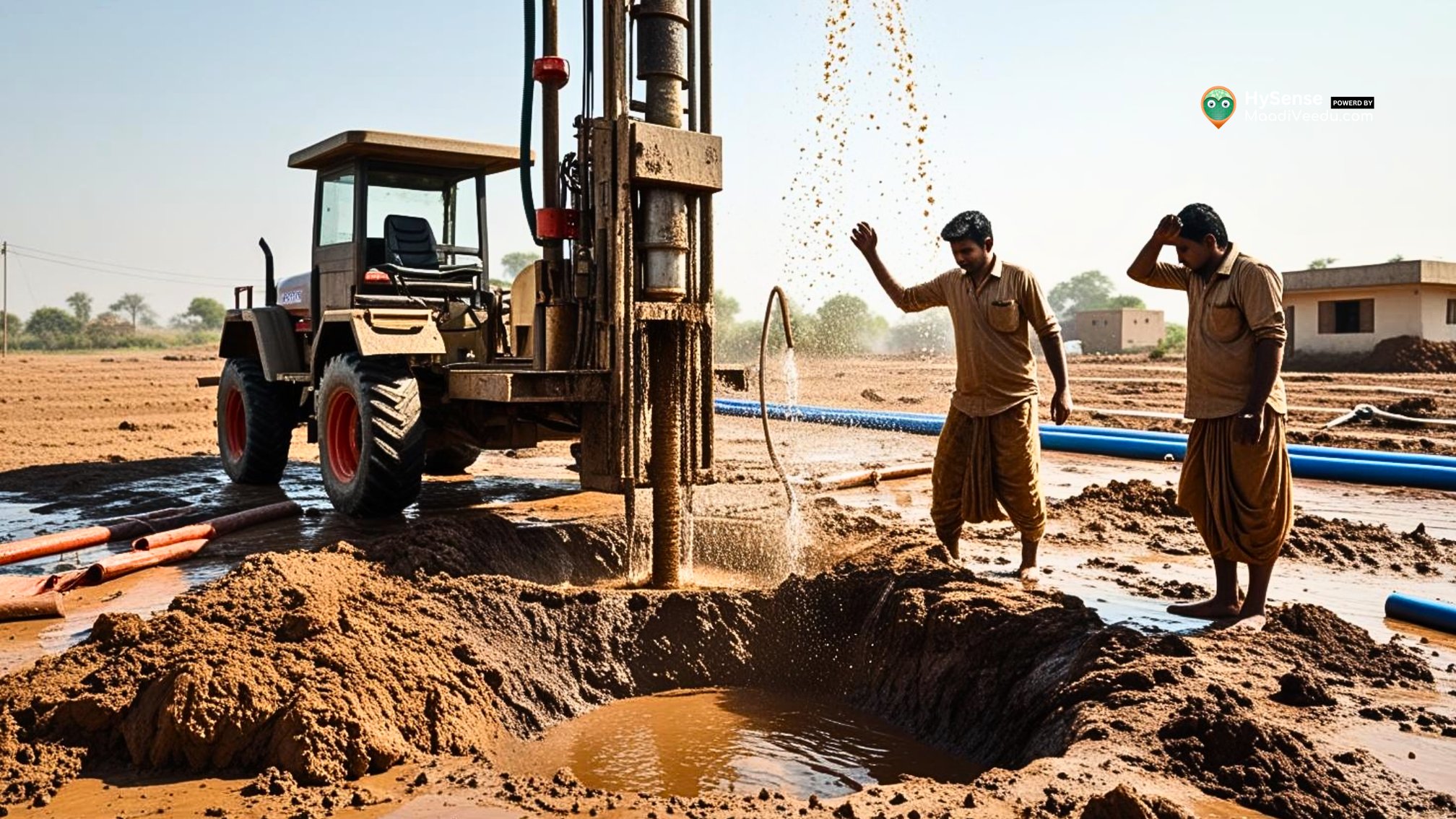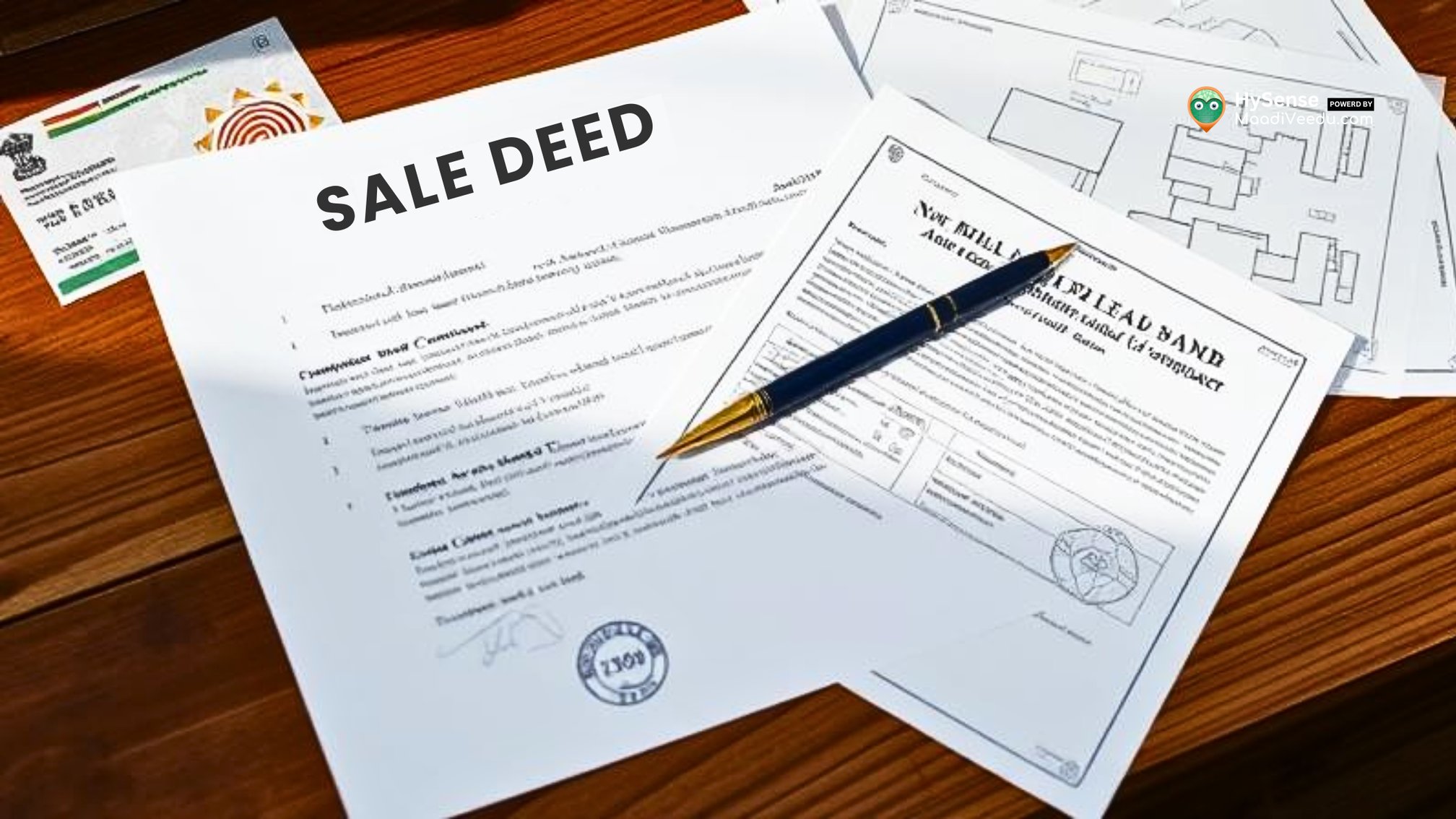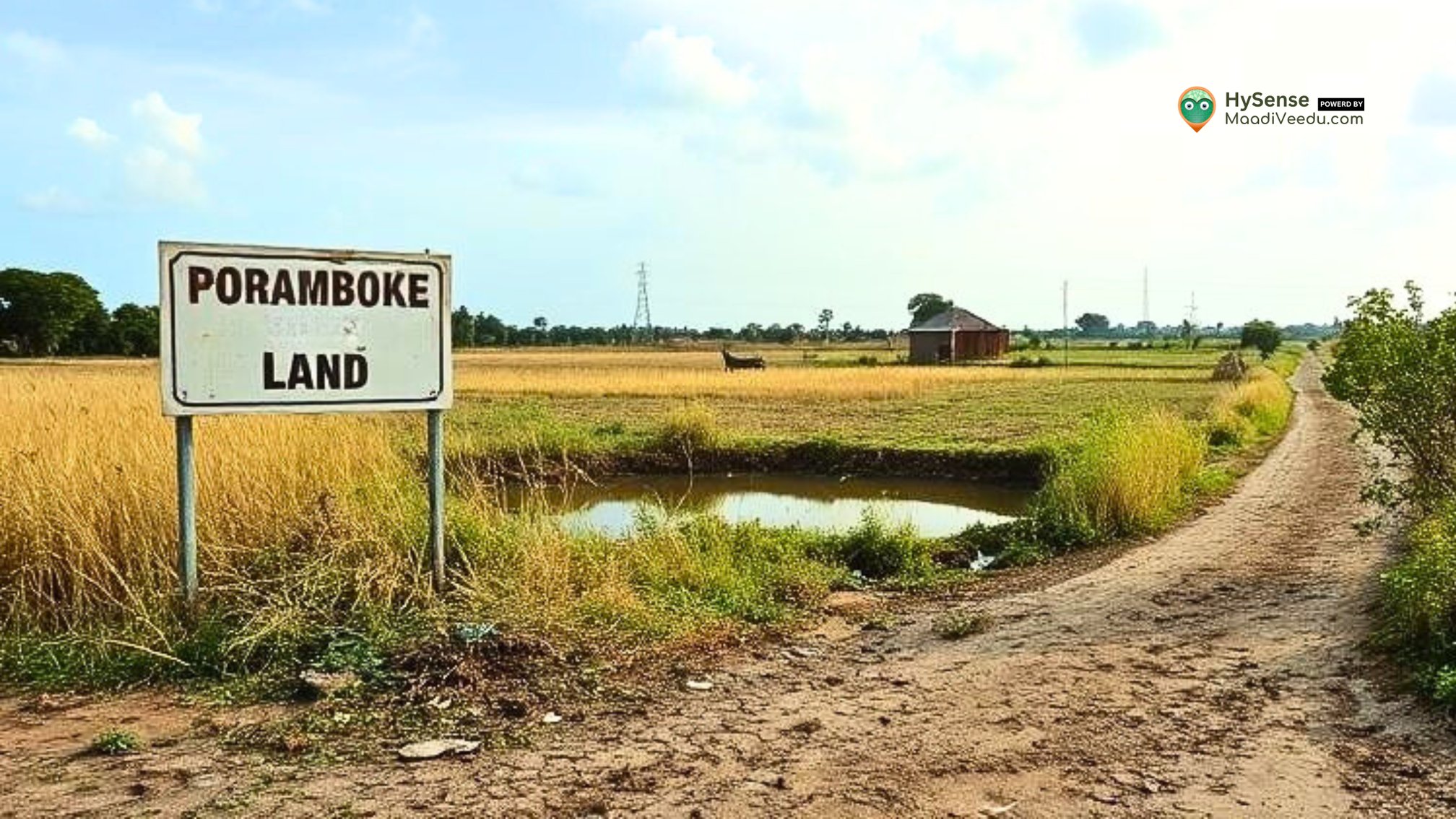How Much Does a Borewell Cost in 2025? Find the Right Size, Depth & Motor Power Before You Drill
Complete borewell guide for India 2025: 4.5" vs 6.5", drilling cost for 250 feet, required motor HP, max depth & how to check water level easily.

Table of Contents
Borewells are an essential water source for millions of homes, farms, and industries across India. Whether you're building a house, planning a commercial facility, or managing agricultural land, understanding the technicalities and practical aspects of borewells is crucial.
In this blog, we cover key details about borewell sizes, depths, drilling costs, motor requirements, and how to check borewell depth—all optimized for those seeking reliable, long-term water access.
Looking for land or homes with a ready borewell? You can now find places where water access is already set up — saves time and extra drilling. Check available options
Borewell Sizes: What’s the Difference Between 4.5" and 6.5"?
The diameter of a borewell plays a crucial role in determining water output, pump compatibility, and maintenance.
- 4.5-Inch Borewell: This is the most commonly used borewell size for residential purposes. It typically accommodates submersible pumps ranging from 1 HP to 2 HP and is suitable for individual homes or small buildings.
- 6.5-Inch Borewell: These are larger and allow for higher water yield. They are preferred for commercial complexes, apartment buildings, or agricultural lands that require greater water extraction. A larger pump can be installed in a 6.5-inch borewell.
Tip: While both sizes can be drilled to depths of 100 feet up to 1000 feet, the 6.5" borewell offers better long-term water security in areas with declining water tables.
What is the Cost of Drilling a 250-Foot Borewell?
The cost of drilling a 200-foot borewell in India depends on various factors such as location, geological conditions, casing pipe material, and diameter of the bore.
Here’s a general estimate for a 6.5" borewell in 2025:
Note: These rates vary by state. In rocky or hard soil regions, drilling costs can go higher due to increased wear and slower drilling speed.
What is the Maximum Depth of a 4.5-Inch Borewell?
Technically, a 4.5-inch borewell can be drilled to depths of up to 1,000 feet. However, the average depth for domestic use ranges between 200 to 600 feet, depending on groundwater availability and soil composition.
In water-scarce zones or rocky terrains, you may need to go deeper. Always consult a local hydrogeologist or borewell contractor for site-specific recommendations.
How Much HP Motor is Required for a 250-Foot Borewell?
For a 250-foot borewell, a 1.5 HP submersible pump is generally sufficient for domestic use. These motors can efficiently draw water from mid-range depths and supply adequate pressure for daily household consumption.
Always choose ISI-certified pumps from reputed brands like Kirloskar, Crompton, or Texmo for durability and service support.
After drilling, it’s not just about getting water — it's about making sure it's safe. Also read: Borewell Water Safety: 5 Important Tests for Safe Drinking Water
How to Check the Depth of a Borewell?
Knowing your borewell's depth helps you determine water level fluctuations, pump placement, and maintenance schedules. Here are simple ways to measure borewell depth:
1. Using a Water Level Meter
- Lower the sensor into the borewell until it touches the water surface.
- The meter will beep or display the depth digitally.
- Accurate and safe method, widely used by professionals.
2. Manual Tape & Weight Method
- Tie a heavy object (stone or metal) to a long measuring tape or rope.
- Lower it slowly until it hits the borewell bottom.
- Pull it out and measure the wetted length to determine water level and depth.
Tip: Measure regularly during dry and rainy seasons to track water table trends.
Final Thoughts
Investing in a borewell is a long-term commitment, and proper planning can save you from costly mistakes. Understanding the right borewell size, drilling depth, motor specifications, and water level tracking can ensure efficient and sustainable water use.
Always work with certified borewell contractors, use quality materials, and get your site evaluated by groundwater experts before drilling.
For more details or assistance with borewell services, feel free to contact us at MaadiVeedu.com or email us at customersupport@maadiveedu.com
Frequently Asked Questions (FAQ)
1. How much does it cost to drill a borewell in 2025?
In 2025, the cost of drilling a borewell in India depends on the depth, soil type, and location. For a 6.5-inch borewell drilled up to 250 feet, you can expect to spend anywhere between ₹48,000 and ₹55,000. This estimate includes casing pipes, labour, and other fittings.
2. What borewell size is best for a house – 4.5" or 6.5"?
If you’re building a single home or a small building, a 4.5-inch borewell usually does the job. But if you need more water or live in an area with a deeper water table, a 6.5-inch borewell gives you better yield and future flexibility.
3. How deep can a 4.5-inch borewell go in 2025?
Technically, a 4.5-inch borewell can be drilled up to 1,000 feet. But for regular home use, most borewells are between 200 and 600 feet deep. The exact depth depends on how deep the groundwater is in your area.
4. What motor HP is needed for a 250-foot deep borewell?
For a borewell that’s around 250 feet deep, a 1.5 HP submersible motor is usually enough for a house. If the depth is more or you need higher pressure, you may need a 2 HP motor. Always go for branded and ISI-certified pumps.
5. How can I check the depth or water level in my borewell?
There are two simple ways. One is using a digital water level meter, which gives an accurate reading. The other is the manual way—just lower a weight tied to a rope or measuring tape until it touches the water or bottom. This gives you a rough idea of how much water is available.
6. What’s the difference between a 4.5" and a 6.5" borewell?
The main difference is in water output and the type of pump you can install. A 4.5-inch borewell is ideal for homes and small buildings. A 6.5-inch borewell is larger, handles bigger motors, and gives better water flow—perfect for farms, apartments, or institutions.
7. Is drilling a borewell a good idea in 2025?
Yes, but it needs proper planning. In 2025, many areas face falling groundwater levels. So it's important to get expert advice, check the water table, and use the right materials. A well-planned borewell can give you steady water for years.










